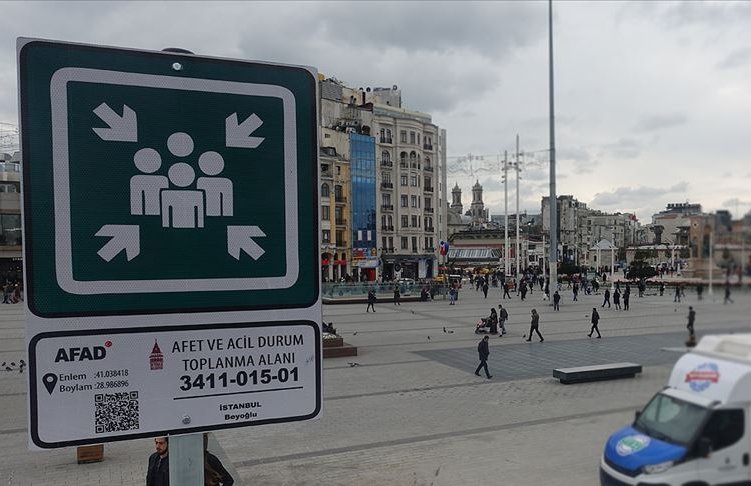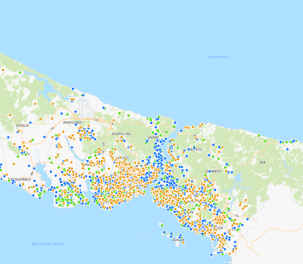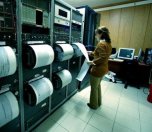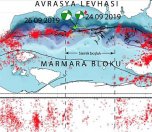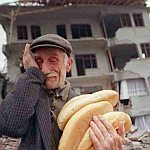Photo: AA/File
Click to read the article in Turkish
The İstanbul Metropolitan Municipality's (IMM) Statistical Office has conducted a survey to gauge earthquake perception and readiness among the residents of the city.
Among the 769 participants, 62.5 percent said they would move to a new safer building if the building they lived in was declared "unsound" after an inspection.
53.2 percent of homeowners and 71.2 percent of tenants said they would move while.
Eighty percent of those who said they would continue to live in the same building cited financial insufficiencies as a reason and 86.6 percent of them stated that they lived in buildings constructed before the 7.4 magnitude earthquake in 1999 in the neighboring province of Kocaeli, which claimed more than 18,000 lives.
While 59.6 percent of the participants in the lower-middle and lower socio-economic group said they would move to a safer building, this rate was 72.3 percent in the upper-middle and upper socio-economic group.
53.5 percent of the participants stated that they knew what to do during the earthquake, 25.2 percent said they had limited information and 21.3 percent said they didn't know what to do.
This rate was 51.4 percent among the participants in the lower-middle and lower socio-economic group and 60.7 percent in the upper-middle and upper socio-economic group.
The triangle of life
40.1 percent of the participants stated that they didn't know the concept of the triangle of life. The proportion of those who said they knew the concept was 65.5 percent in the 15-39 age group and 53.3 percent among those older than 40.
56.3 percent of the participants in the lower-middle and lower socio-economic group and 71.9 percent of the participants in the upper-middle and upper socio-economic group said they knew the concept of the triangle of life.
When asked about whether they determined areas for the triangle of life in their homes, 59.1 percent said they did.
Earthquake kits
Only 27.9 percent of the participants said they had an earthquake bag while 72.1 percent of them don't have one.
25.6 percent of the participants in the lower-middle and lower socioeconomic group and 35.8 percent of the participants in the upper-middle and upper socioeconomic group stated that they had earthquake kits.
Assembly areas
52.6 percent of the participants stated that they didn't know where the emergency assembly area in their neighborhood is. 47.9 percent of the 15-39 age group and 46.9 percent of those aged 40 and over said they knew the location of the assembly areas. There was no significant difference between socio-economic groups in the answers to this question.
Damage estimates
In case of an earthquake with a magnitude of at least 7.0, most people said their buildings would be damaged or collapsed.
22.4 percent of the participants stated that the building they lived in would collapse, 16.7 percent said their buildings would be severely damaged, 26.5 said their buildings would be moderately damaged, and 20.9 said their buildings would be slightly damaged. Only 13.5 percent said their buildings wouldn't be damaged at all.
Among those living in buildings constructed before the 1999 earthquake, 22.4 said their buildings would be severely damaged and 32.3 said their buildings would collapse.
43.4 percent of homeowners and 25.4 percent of tenants said the buildings
41.2 percent of the participants in the lower-middle and lower socio-economic group and 32.2 percent of the participants in the upper-middle and middle socio-economic group stated that they think their buildings would be severely damaged or collapse. (DŞ/VK)




